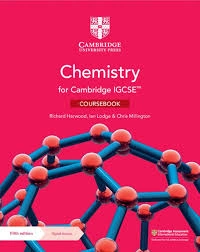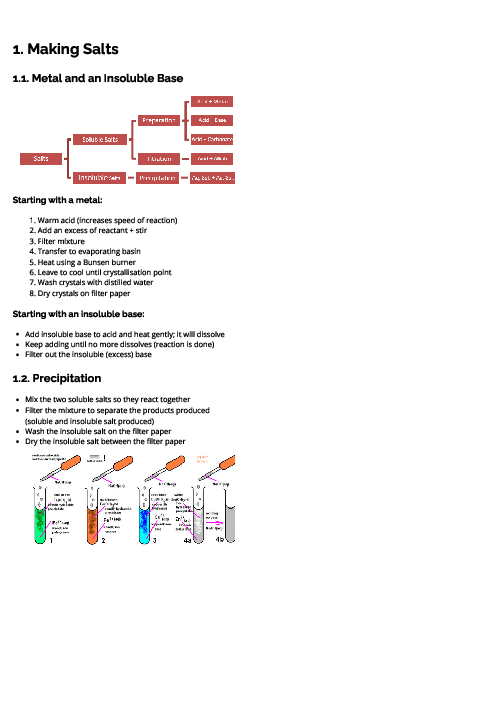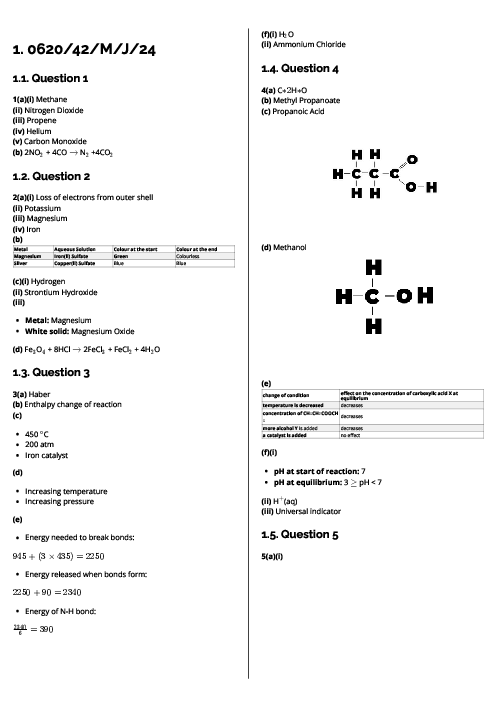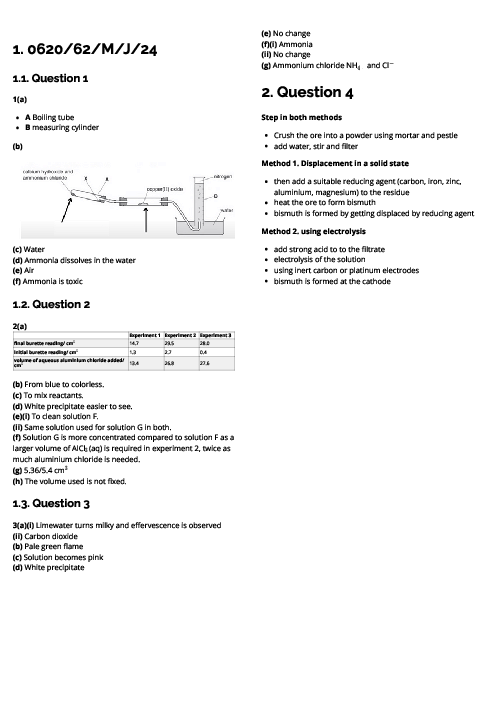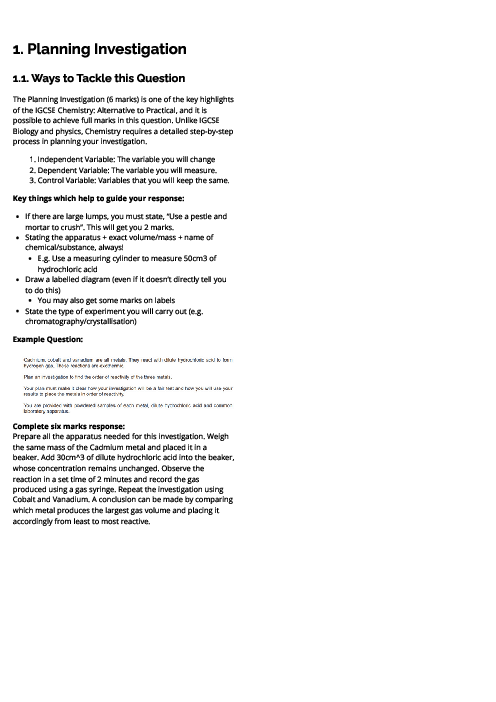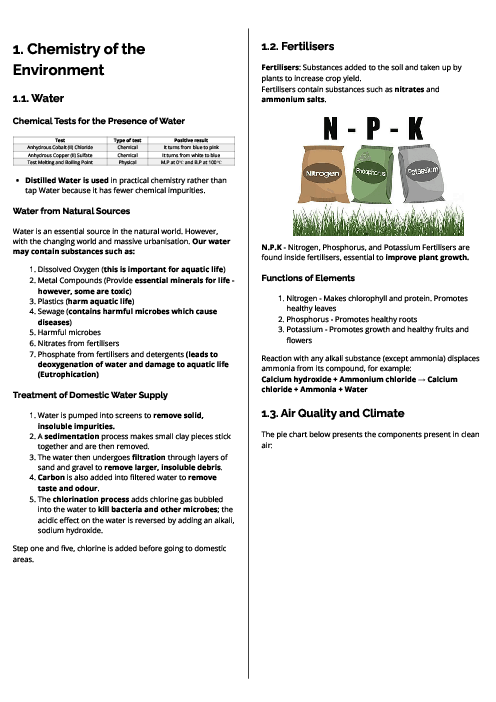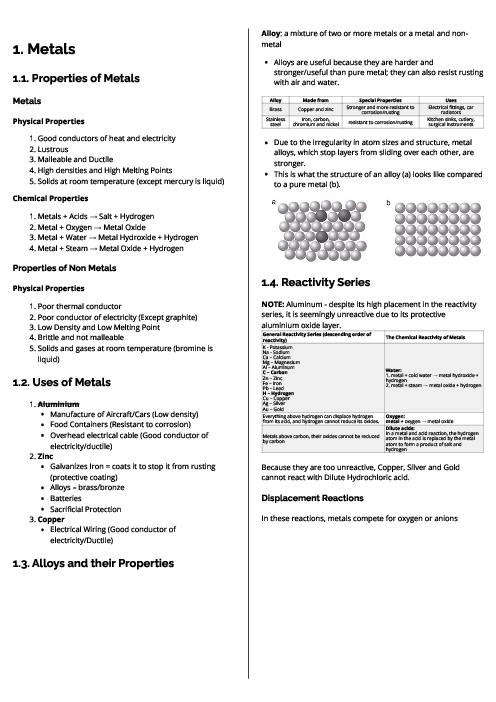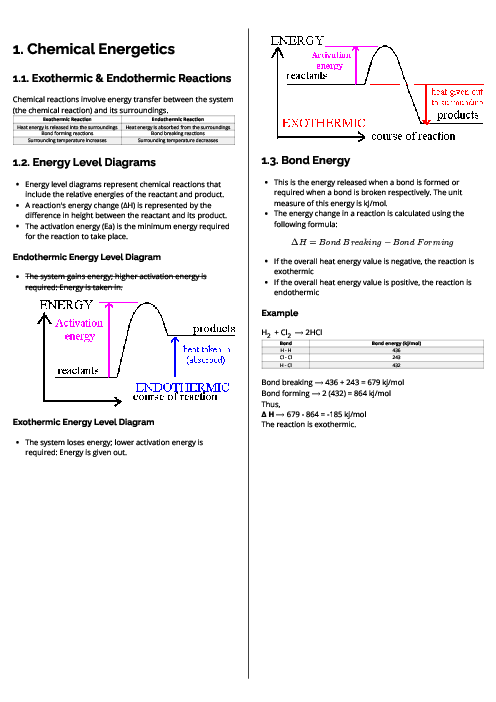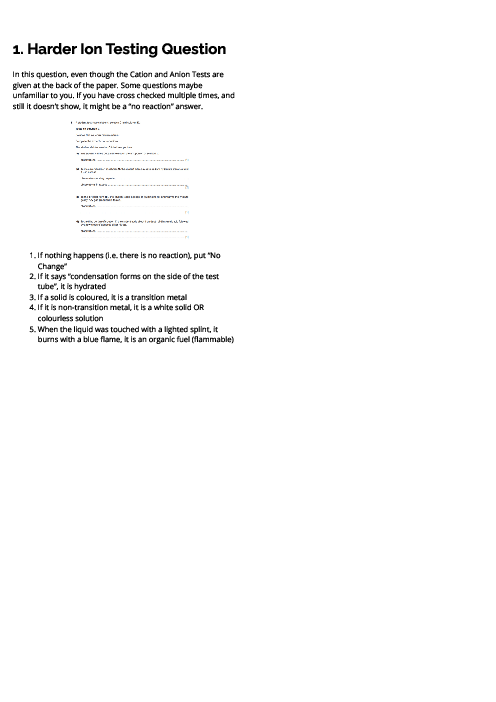Chemistry (0620) Chemistry of the Environment Revision Note
This document explains chemistry of the environment for CAIE IGCSE Chemistry, focusing on water, fertilisers, air quality, climate change, and pollution control. It begins with tests for water, using anhydrous cobalt(II) chloride (blue to pink) and anhydrous copper(II) sulfate (white to blue), along with melting/boiling points. Water treatment is described step by step—screening, sedimentation, filtration, carbon treatment, and chlorination to remove impurities and microbes. Fertilisers are defined as compounds like nitrates, phosphates, and potassium salts that increase crop yield, with NPK fertilisers linked to healthy leaves, roots, and flowers. Ammonia displacement reactions are also explained. The section on air quality highlights clean air composition (78% nitrogen, 21% oxygen, 1% noble gases/CO₂) and harmful pollutants such as carbon monoxide, CO₂, methane, sulfur dioxide, nitrogen oxides, and lead compounds, along with their health and environmental effects including global warming, acid rain, and smog. The greenhouse effect is outlined, showing how gases trap heat and intensify climate change. Strategies to reduce environmental damage include renewable energy, low-sulfur fuels, catalytic converters, reforestation, and flue gas desulfurisation. Finally, catalytic converters are explained, using platinum and rhodium to neutralise toxic exhaust gases via redox reactions. This guide provides essential knowledge of environmental chemistry and pollution control.
باز نشر محتواها در فضای مجازی، ممنوع است.
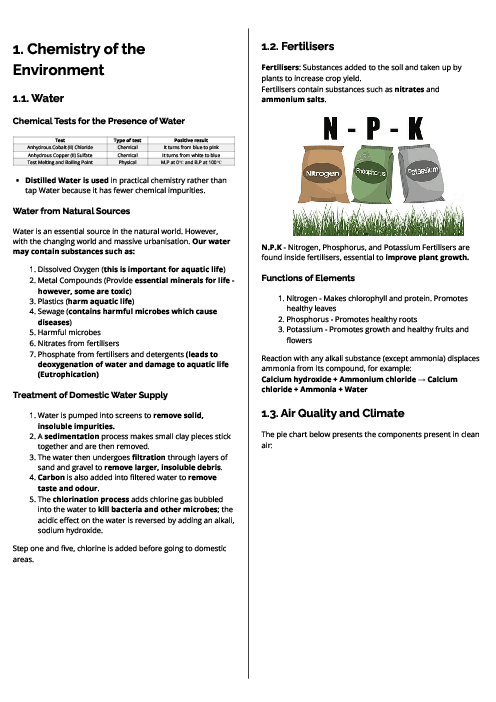
باز نشر محتواها در فضای مجازی، ممنوع است.

